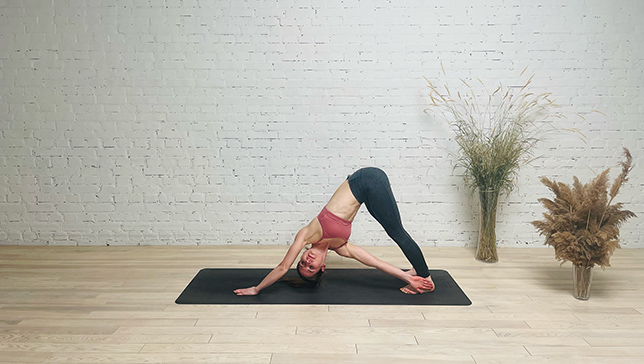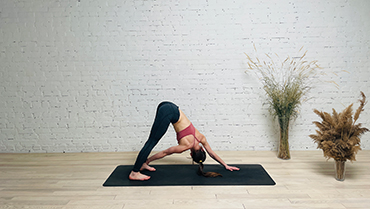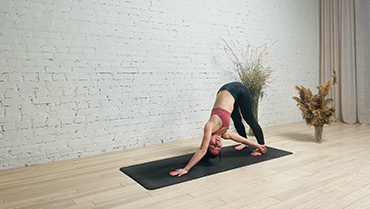Revolved Downward-Facing Dog Pose - Parivrtta Adho Mukha Svanasana

Contents
Revolved Downward-Facing Dog Pose or “Parivrtta Adho Mukha Svanasana” (PAHR-ee-VREE-tah Ah-doh MOO-kuh shvan-AHS-uh-nuh), comes from five words: “Parivrtta” — meaning “revolved” “Adho” — meaning “downward” “Mukha” — meaning “face” “Svana” — meaning “dog” “Asana” — meaning “pose” It also goes by various other English names, including “Revolving Downward Dog,” “Down Dog Twist,” “Twisting Down Dog.” In this variation, the yogi brings one hand to the opposite ankle and twists in the same direction. Along with a deep stretch, the pose brings energy to the mind.
Pose Detail
- By Type: Balancing Yoga Poses, Strengthening Yoga Poses
- Difficulty: Intermediate
- Body Position: Inversion Yoga Poses, Standing Yoga Poses, Twist Yoga Poses
Step-by-Step Instructions
Benefits and Contraindications
Strengthens the arms and legs
Stimulates the abdominal organs and Improves digestion
Relieves fatigue and energizes the body
Stretches shoulders, hamstrings, calves, spine and hands
Pacifies Kapha dosha
High blood pressure
Back, arms, or shoulders injury.
Eye or inner ear infections
Photo poses in different angles


Modifications and Props
- To add increased circulation and warmth throughout your body, try a bent-knee variation. Come into the full pose with your left hand pressing into the floor, placed to the outside your right foot. Then bend your right knee while keeping your left leg straight. Hold for three breaths, and then change sides. Repeat this sequence five times.
- For a greater challenge, try a lifted-leg variation. Come into the full pose with your left hand pressing into the floor, placed to the outside your right foot. Then, lift the leg that is on the same side as your grounded hand. Hold it as high as possible, reaching through the heel. Hold for up to 10 breaths. Return to Downward-Facing Dog, and then repeat on the other side.
Tips
The breath is of course such an important part of our practice, and there are so many ways to use it in a posture to change the way we experience it. Twists are especially potent when we start to use the breath in them. Although there may be a sense of creating less space in the body when we’re in the twist, if we continue to breathe fully and deeply, the result after we’ve practiced is a sense of openness and spaciousness in the body, and a ‘freeing of the breath’.
Frequently Asked Questions
Variations
- Downward Facing Dog Pose
- Three Legged Downward Facing Dog Pose
- Downward-Facing Hero Pose